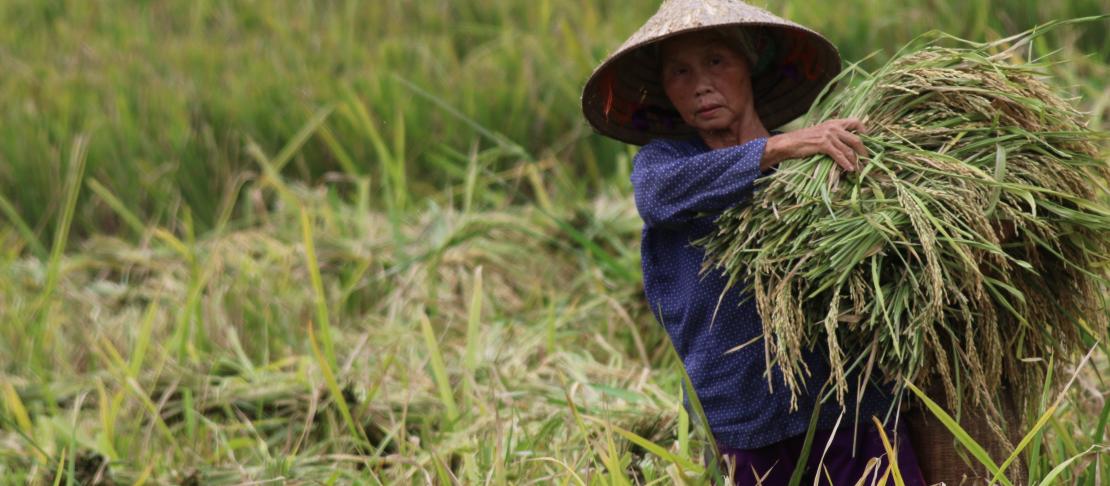Moving closer to achieving climate-smart future for Southeast Asia

Fostering learning and sharing knowledge and experiences across Climate-Smart Villages and projects in Southeast Asia.
Based on the CGIAR Research Program on Climate Change, Agriculture and Food Security (CCAFS)’ Southeast Asia's vision, by 2025, the Southeast Asian region has achieved a stable food supply, and communities, especially those in the most vulnerable areas, have already improved their climate change resilience through the adoption of climate-smart technologies and practices.
By this time, institutional, public, and private sector’s capacities to implement measures to cope with climate change are already strong, and climate change adaptation and mitigation measures are fully integrated into both regional and national development plans. These goals guided the implementation of its flagship projects (FP) under the program.
On its third annual meeting, CCAFS SEA looked at the four flagship projects’ progress in terms of achieving the goals abovementioned since the second phase of the program started. The annual meeting was held on the 20th of November in Hanoi, Vietnam.
The beginnings of CCAFS
The regional agenda and research portfolio of CCAFS SEA are put into four flagships (FPs), FP1 – priorities and policies for climate-smart agriculture, FP2-climate-smart technologies and practices, FP3–low emission development ad FP4–climate services and safety nets.
The Climate-Smart Village (CSV) project serves as convergence point of the flagship projects. These are implemented to improve farming communities’ resilience to challenges brought about by climate change which are expected to be worsened by the region’s rapid economic growth.
At present, the projects of CCAFS SEA are mostly located in three countries of Vietnam, Laos, and Cambodia because they are among the most vulnerable countries to climate change in the region. However, there are also other projects implemented in the Philippines and Indonesia.
CCAFS flagship leaders Dr. Phil Thornton and Dr. Andy Jarvis, together with CCAFS SEA regional program leader Dr. Leocadio Sebastian, facilitated a special session on the future projects’ focus. Photo by Duong Minh Tuan/ICRAF
CSV achievements
During the review conducted during the event, participants discussed the successes and challenges faced by the flagship projects and looked at how much of the desired outputs and outcomes have already been achieved. The key emerging outcomes from CSV sites in Vietnam, Philippines, and Laos, have also been highlighted in the workshop.
For instance, in the first stage of the CSV project in Guinayangan Village in the Philippines’ Quezon Province, the implementers had successfully engaged with local governments. In addition, the incorporation of climate-smart agriculture into the local government’s agriculture extension services is expected to have benefitted around 5,000 farmers in Guinayangan Village. Guinayangan is also recognized as a learning site that influenced the implementation and rolls out of the Philippines’ Adaptation and Mitigation Initiative in Agriculture (AMIA) program.
As for the project of CSVs in the Mekong Basin, initial outcomes include eight climate-smart agriculture practices and technologies have been implemented with engagement of 100 local households. For example, in Vietnam’s Ky Son Commune, implementers have successfully coordinated with local governments, same with Guinyangan. They have also helped 2,000 farmers in achieving stable incomes and two neighboring villages in selecting 3 CSAs as priorities for scale out: stress tolerant rice varieties, dry season water storage, and pest smart practices for adoption during the first year of the project’s second phase.
Meanwhile, Rohal Suong CSV in Cambodia is now being poised to be selected as a demonstration site under IFAD-funded ASPIRE project (worth about USD 50 million).
A special poster session was held to showcase the significant outputs and emerging outcomes of the various CCAFS SEA's regional projects. Photo by Duong Minh Tuan/ICRAF
Points for improvement
Despite the successes of CCAFS SEA in the first phase and the first year of its second phase, several challenges are still needed to be addressed in the remaining years in the second phase.
The biggest concern to be addressed now pertains to the mobilization of funding for the projects because the total budget left is not enough to run all the projects while most of them will end next year.
Aside from this, Dr. Andy Jarvis, one of the Flagship Leader of CCAFS stated that there is a need to re-design the projects to make it fit with the situation. To address this concern, Dr. Godefroy Grosjean, an expert from the International Center for Tropical Agriculture (CIAT), suggested three ways they can improve mobilization of financial resources for the projects in the region.
According to him, the first step that CCAFS should do is to recruit a joint position with the Food and Agriculture Organization for a climate finance expert. Second, it is advised to develop new agenda on climate finance, including fiscal reform, evaluation of business models, and carbon pricing. The third step is taking new methodology such as behavioral economics, he said.
Dr. Leocadio Sebastian, regional program leader of CCAFS SEA, also pointed out the gaps between discussions and the reality in the field where the projects were implemented. He called for all stakeholders to suggest solutions in order to cope with these challenges, so that the projects would be smoothly run in the coming years.
Nguyen Thu Hang is a reporter of the Viet Nam News.





